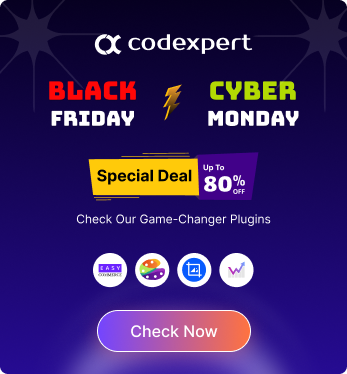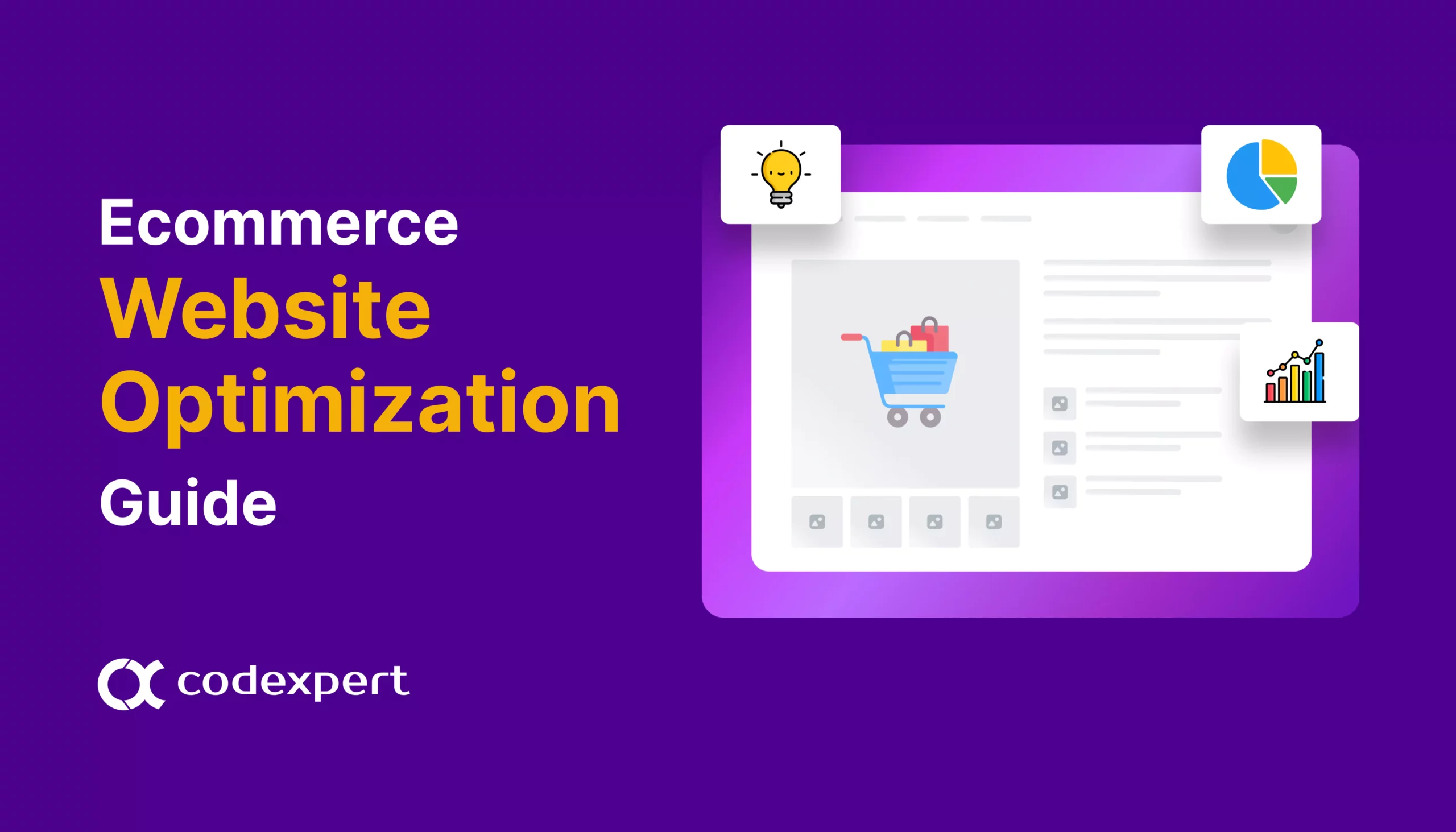Ecommerce Sales Life Cycle – The Ultimate Guide

Selling online is not just about listing products and waiting for people to buy them. It’s about understanding how people move from visiting your store to becoming repeat customers. This journey is called the ecommerce sales life cycle.
When you understand this cycle, you can make better decisions, as you’ll know what your buyers need at each stage. You’ll also see where you lose sales and how to fix that.
Let’s walk through each part of the life cycle step-by-step.
What is Ecommerce Sales Life Cycle?
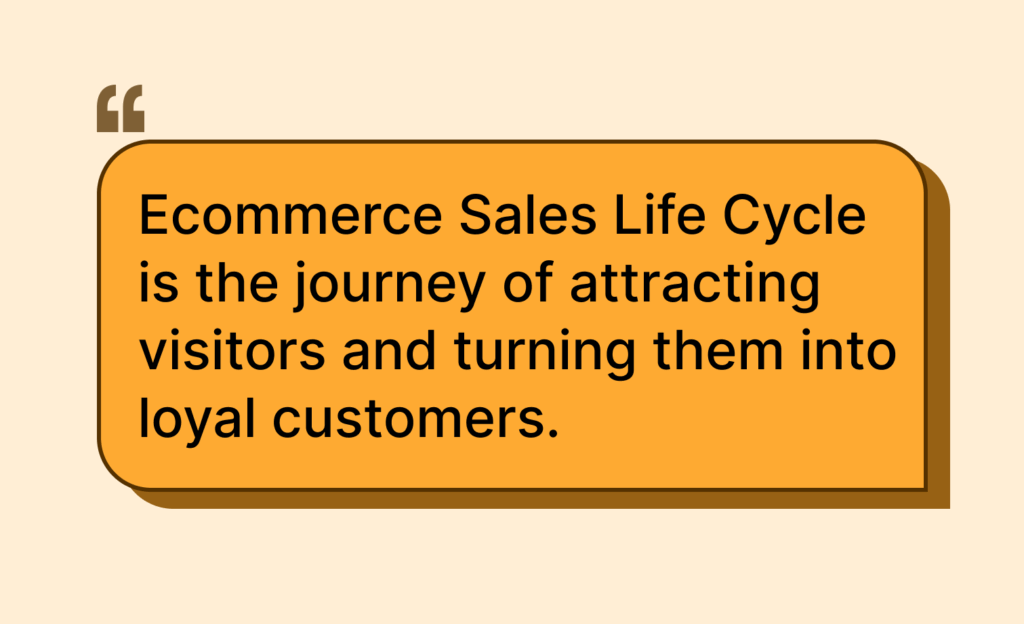
The ecommerce sales life cycle is the full journey a person takes from the moment they hear about your brand until they become a loyal customer. It has six clear stages:
- Awareness: This is when a potential customer first discovers your brand. This can happen through ads, social media, word of mouth, or search engines.
- Interest: They become curious and start exploring your product or service to learn how it fits their needs.
- Consideration: They actively evaluate your offering, compare it with competitors, read reviews, or seek more details before deciding.
- Purchase: The customer decides to buy your product or service and completes the transaction.
- Retention: After buying, they stay engaged with your brand through follow-up emails, support, loyalty programs, or quality service.
- Advocacy: Satisfied customers recommend your brand to others, share positive feedback, and help attract new buyers.
Each stage has its own goal and needs the right actions from you to move people to the next one.
6 Stages of Ecommerce Sales Life Cycle
Most ecommerce store owners focus only on traffic and sales. But it’s not viable to know a product’s potential without assessing its sales life cycle first. Some even go the wrong way by trying to sell items that have already passed their prime life cycle.
To help with that, here’s a quick breakdown of the key stages in the ecommerce sales life cycle:
Stage 1: Awareness
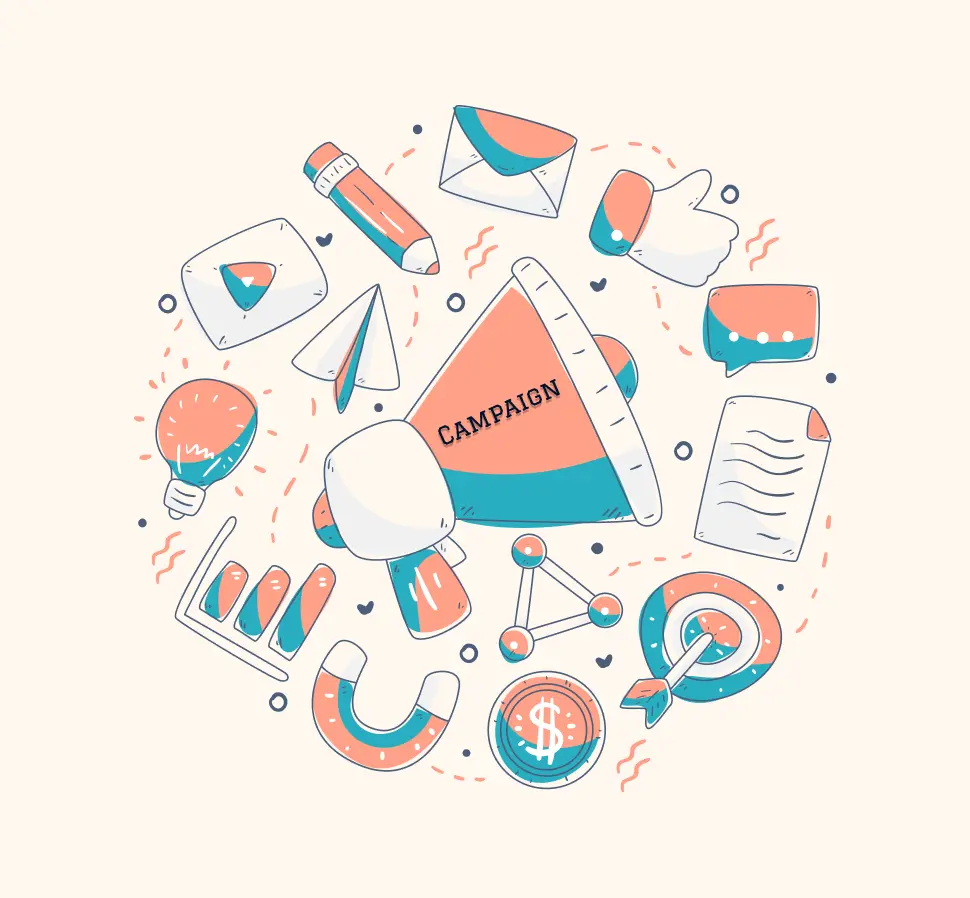
This is the very first step where the person doesn’t know your brand yet. They are not looking for your store. They are just browsing online, reading blogs, scrolling through social media, or searching for solutions. So, at this stage, your goal is simple: get discovered.
This is where SEO, ads, social media, and word of mouth play a big role. If someone searches for ‘organic baby food,’ your site needs to show up. If they scroll through Instagram and see your post, they now know you exist.
This stage is not for selling, it’s about visibility. If you try to sell too early, people may leave. Instead, offer value, build trust, and help people understand what your brand is about.
Stage 2: Interest
If you were successful in drawing your potential buyers’ attention, the person should know your brand. Maybe they have seen your ads or maybe they visited your homepage or product page, but they are not ready to buy yet.
So, your next goal is to turn their attention into interest that makes them further evaluate your store.
You can do this by:
- Sharing more useful content (information that helps the user relate, if this is products they are looking for)
- Showing product details clearly (specs, details that contain technical information)
- Letting them browse without pressure (not pushing for purchase)
- Offering a small incentive to join your email list (an incentive can make them register for your store, and you can use this lead to market your products in the future)
This stage is about building a connection. The person wants to learn more and they want to see what makes your brand different.
If you don’t offer enough reasons to stay, they will leave and forget you.
Stage 3: Consideration
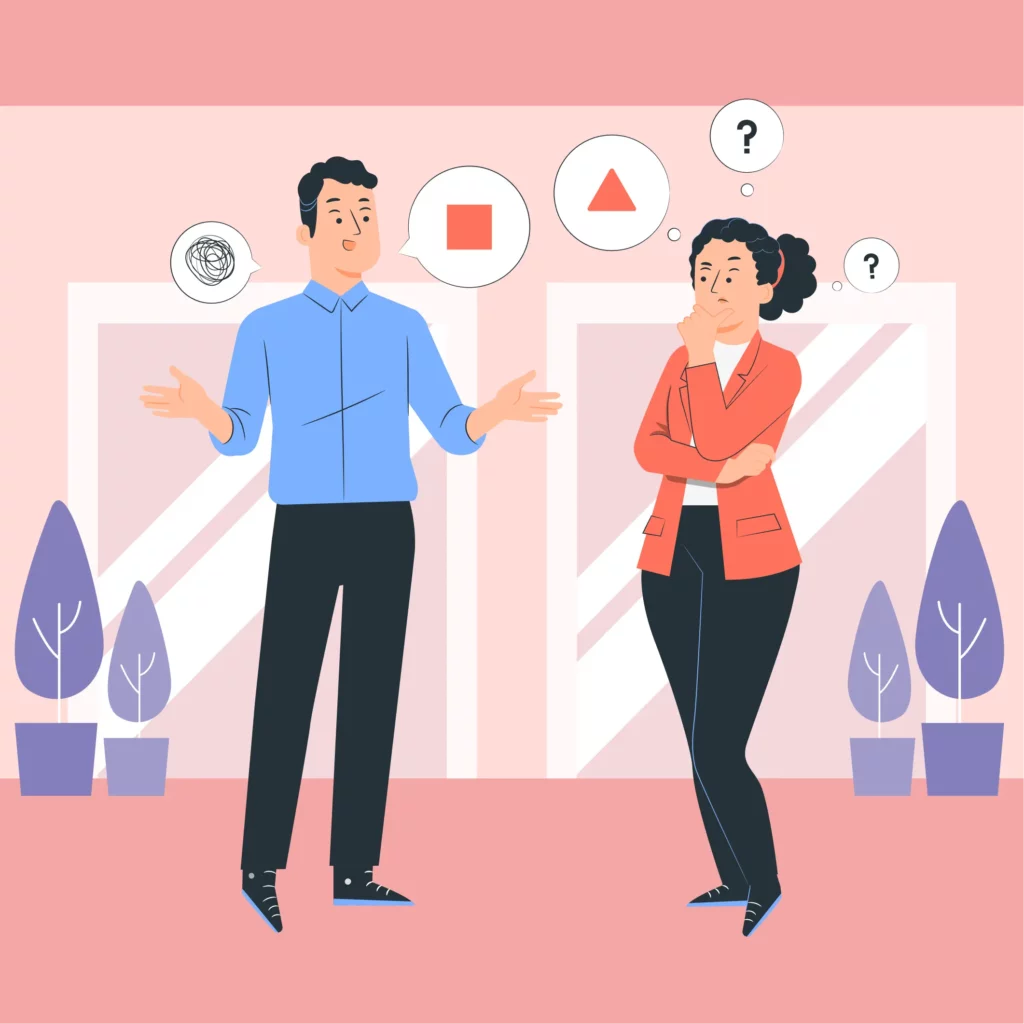
The next phase in the ecommerce sales life cycle is consideration. At this point, the visitor is thinking about buying (not necessarily from you yet).
They’re comparing products, checking out different stores, and weighing their options. The furthest they might go is adding a product to the cart, but they often leave before completing the purchase.
Your job is to build trust while reducing customer doubts. To do that, you need to answer common questions or take actions that address what’s on their minds.
- Is this product worth the price?
- Can I return it if I don’t like it?
- What do other customers say?
In short, you need to make everything easy for the customer to understand. Clear pricing, return policies, and reviews help a lot here.
This is also a good time to send friendly emails, offer small discounts, or use retargeting ads. The goal is to help them feel confident to buy from you.
Stage 4: Purchase
This is the moment you have been waiting for: the visitor becomes a buyer.
They have decided to place the order but your job is yet to be done. You need to make sure the future customer has all the required environment to complete the checkout smoothly.
Remember that there could be more than one reason why the visitor can still abandon the purchase at any moment. This includes –
- If the website is too slow
- Complicated user experience
- Not having the desired payment method
- Broken UI in mobile devices
- Too much information is asked at checkout, etc.
Rather, try to make the buying process –
- Fast: Don’t make customers wait. A quick and smooth checkout increases the chance of a sale. Avoid unnecessary steps and keep things simple.
- Mobile-friendly: Most shoppers use their phones. Make sure your website looks good, loads well, and is easy to navigate on all screen sizes.
- Easy to understand: Use clear words, simple layouts, and helpful prompts. Make sure anyone can figure out how to add to cart, apply discounts, or complete a purchase without having to read any documentation.
EasyCommerce, a WordPress eCommerce plugin that is designed to make the shopping journey easier with an in-built shop, checkout to help you close more sales faster. Also, avoid asking for too many details and don’t force account creation. The fewer the clicks, the better. After they pay, show a clear confirmation page and send a thank-you email right away (preferably automated).
This builds trust and makes them feel assured about their decision.
Stage 5: Retention
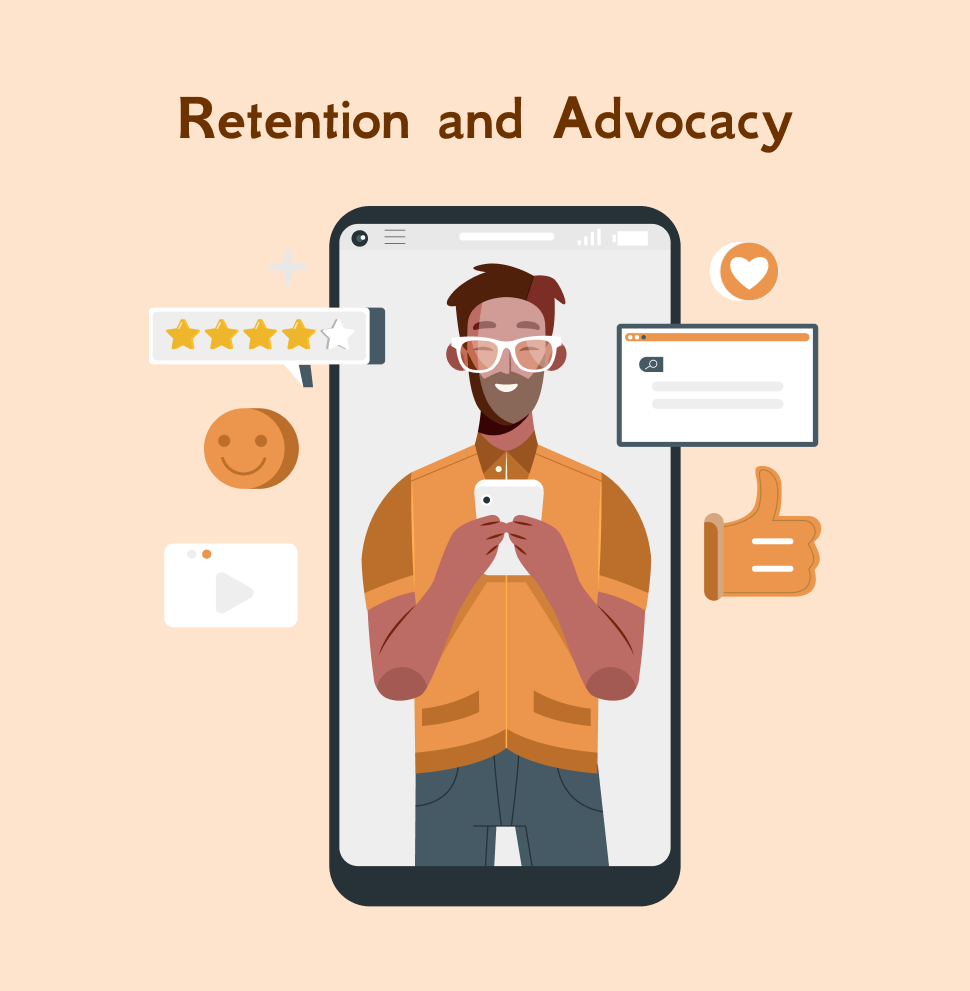
Now they’ve bought your product, but has the sales life cycle ended? No. Keeping a customer is easier and cheaper than getting a new one, and it’s why retention matters.
So, in this stage, your job is to stay connected and add more value so that the newly onboarded customers keep coming back. Obviously, not with complaint, but new orders. Here are some things you can try –
- Sending follow-up emails
- Offering helpful tips or guides related to the product
- Giving a small discount on their next order
- Asking for feedback or reviews
- Let the customers feel valued always
Good retention also means solving problems quickly. If there’s an issue with shipping or the product, handle it fast. A happy customer is more likely to return, while an unhappy one may never come back.
So don’t just celebrate the first sale, focus on keeping them around. A retained customer often needs no extra marketing to make another purchase.
Stage 6: Advocacy
Wait! You have one last thing to do – help that happy customer market for you. If your product and overall service are standard enough, then you should have one or two (or more) loyal customers for sure.
They would love your brand so much that they tell others about you. This can be done by writing a review, sharing your products with a friend, and bringing in new buyers. This is called advocacy. So, here’s what you can do to achieve it –
- Say thank you when they leave reviews
- Create a referral/affiliate program (Try WC Affiliate)
- Share user-generated content on your site or social media
- Send surprise rewards to loyal buyers
When people feel appreciated, they spread positive news about your brand. This brings you new traffic without ads. It’s a natural cycle that keeps your business growing.
Why Every Stage of the Ecommerce Sales Cycle Matters
First of all, you don’t need to memorize and apply each step one by one. Once you understand how it works and keep doing it consistently, the process will start to feel natural and flow on its own.
If people don’t know your brand, they’re less likely to visit your store. If they don’t trust your brand, they won’t click ‘buy’. If you don’t follow up after the sale, they won’t come back. Each stage builds on the one before it. If you skip one, the cycle breaks.
That’s why the full life cycle is important. It helps you turn strangers into loyal, long-term customers.
Common Mistakes to Avoid for Ecommerce Sales Life Cycle
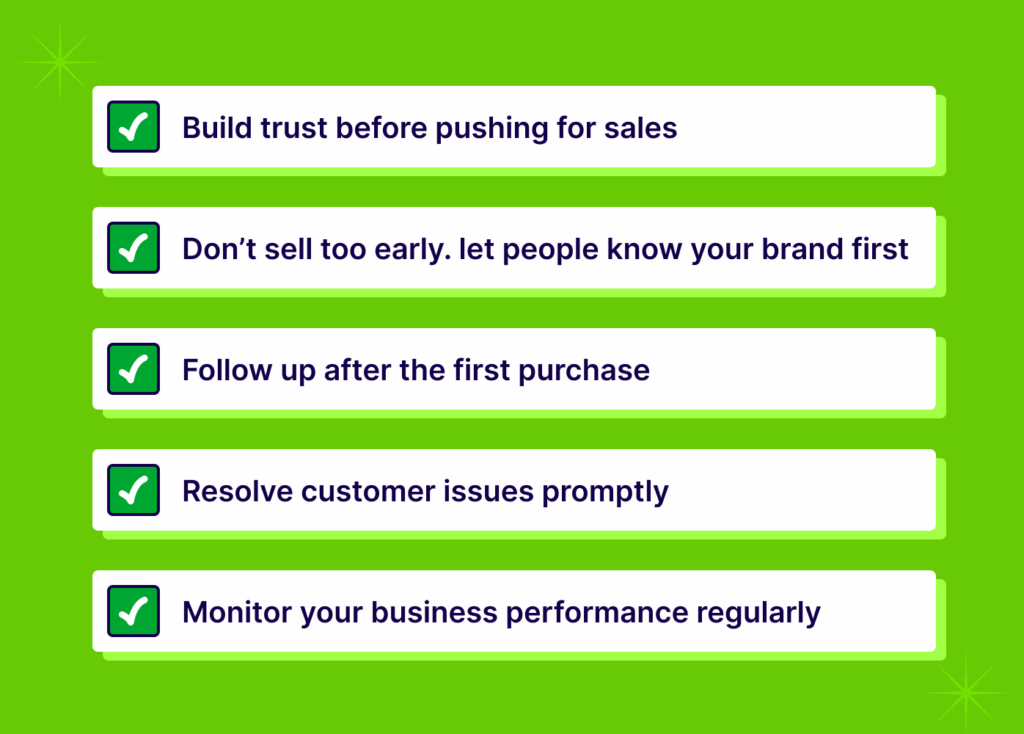
It’s not like you’ll be able to do everything in order, especially when you’re just starting a business. It’s normal for store owners to make these mistakes.
But knowing what not to do can save your time, resources, and motivation a lot. So, make sure to –
- Not rely solely on ads before building trust among the users.
- Not try to sell too early before people know the brand
- Remember to follow up with the customer after the first sale
- Never ignore issues that the customer has submitted regarding your service
- Keep your business insights on monitor to see what works and what doesn’t
Final Thoughts
The ecommerce sales life cycle is not just a marketing idea. It’s how real people behave when shopping online. They go from not knowing you to buying from you, and then sharing their love for your brand.
The chances are high that your ecommerce initiative can earn that too if you understand, follow, and implement the ecommerce sales life cycle in your business as well. However, remember that it’s not something you can learn overnight.
So the process remains as straight as an arrow – getting noticed by people, understanding their pain points, offering something that can’t decline, bringing them onboard, following up on their experience, and trying to earn free advocacy out of them.
Guide them through each step, slowly, simply, and with care. If you do it right, you’ll sell more. You’ll build a brand that people trust.
Frequently Asked Questions (FAQs)
Q. What are the 3 C’s of ecommerce?
The 3 C’s are Content, Commerce, and Community. Content draws interest, commerce handles transactions, and community builds trust and loyalty through engagement.
Q. Why is understanding the ecommerce sales life cycle important?
Understanding the sales life cycle helps you optimize each stage for better results. You can reduce cart abandonment, improve customer experience, and increase repeat purchases by implementing eCommerce sales life cycle.
Q. How do I move customers through the ecommerce sales cycle?
Use targeted marketing at each stage: run ads and SEO for awareness, offer product comparisons for consideration, simplify checkout for conversions.
Also, use email marketing for retention, and loyalty programs to encourage repeat sales.
Q. How can I improve customer retention in my ecommerce sales life cycle?
Focus on post-purchase engagement. Send follow-up emails, offer discounts for future purchases, provide excellent customer service, and ask for feedback. These steps help turn one-time buyers into loyal customers.
What is the product life cycle of ecommerce?
The product life cycle in eCommerce are the stages a product goes through in an online store. It starts from introduction then advances through growth, maturity, and ends at decline.
Subscribe to Our Newsletter
Get the latest WordPress tutorials, trends, and resources right in your inbox. No Spamming, Unsubscribe Anytime.

Thank you for subscribing to our newsletter!
Table of Content
- What is Ecommerce Sales Life Cycle?
- 6 Stages of Ecommerce Sales Life Cycle
- Stage 1: Awareness
- Stage 2: Interest
- Stage 3: Consideration
- Stage 4: Purchase
- Stage 5: Retention
- Stage 6: Advocacy
- Why Every Stage of the Ecommerce Sales Cycle Matters
- Common Mistakes to Avoid for Ecommerce Sales Life Cycle
- Final Thoughts
- Frequently Asked Questions (FAQs)
- Q. What are the 3 C’s of ecommerce?
- Q. Why is understanding the ecommerce sales life cycle important?
- Q. How do I move customers through the ecommerce sales cycle?
- Q. How can I improve customer retention in my ecommerce sales life cycle?
- What is the product life cycle of ecommerce?










